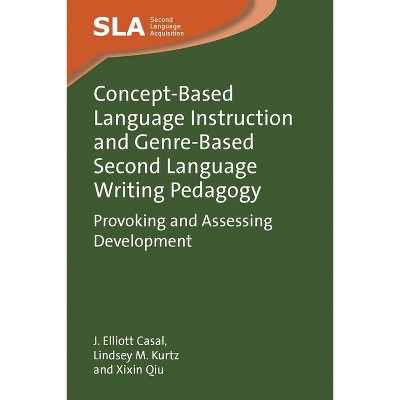Peer Interaction in the Foreign Language Classroom - (Second Language Acquisition) by Elisabet Pladevall-Ballester (Hardcover)

About this item
Highlights
- Expands empirical research on peer collaboration and the potential benefits it may bring to learners.
- About the Author: Elisabet Pladevall-Ballester is Associate Professor in English Language and Linguistics and Head of Department at Universitat Autònoma de Barcelona, Spain.
- 222 Pages
- Language + Art + Disciplines, Study & Teaching
- Series Name: Second Language Acquisition
Description
About the Book
This book highlights the role of peer interaction in the foreign language (FL) classroom and explores the different factors and contexts that mediate its effect on target language use and development. Taking different methodological approaches, all chapters are centred on FL classroom practice and how peer interaction can be effectively integrated.
Book Synopsis
Expands empirical research on peer collaboration and the potential benefits it may bring to learners.
This book highlights the role of peer interaction in the foreign/second language classroom and offers a broad and nuanced exploration of the different factors and contexts that mediate its effect on target language use and development.
The chapters focus on different age and proficiency groups (young learners, adolescents, adults), different instruction and task characteristics (face-to-face and computer-mediated instruction, pre-task instruction, proficiency pairing) and a variety of outcomes (fluency, accuracy, language related episodes, grammatical knowledge, foreign language anxiety and affect, collaborative patterns and perceptions).
Together they highlight the importance of interaction and collaboration among peers in the foreign language classroom to foster learners' communicative abilities and to maximise language development and affect.
Review Quotes
This book not only showcases updated research but provides useful information as to why peer interaction sometimes falls flat in the classroom and what teachers can do to ensure that their students benefit from peer interaction activities. It is a must-read for researchers and practitioners alike who are interested in interaction and language learning.-- "Masatoshi Sato, Universidad Andrés Bello, Chile"
About the Author
Elisabet Pladevall-Ballester is Associate Professor in English Language and Linguistics and Head of Department at Universitat Autònoma de Barcelona, Spain. Her research interests include child and adult second language acquisition and foreign language learning in bilingual immersion and instructed classroom contexts, as well as CLIL in primary education contexts.
Shipping details
Return details
Trending Book Pre-Orders












